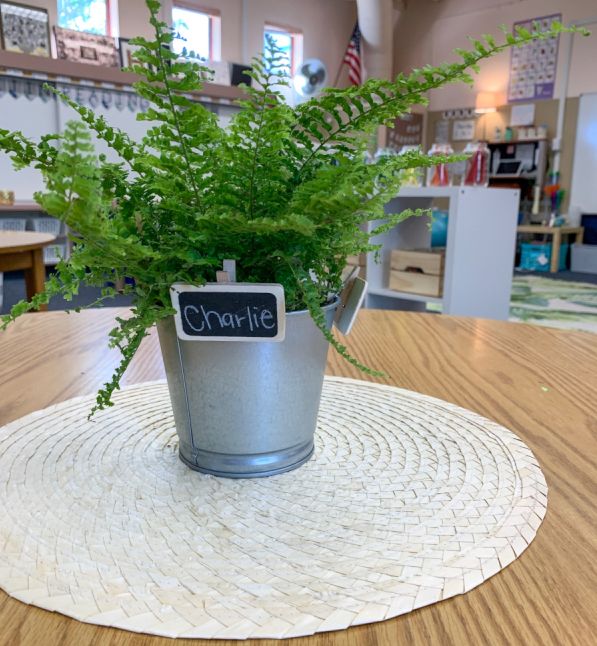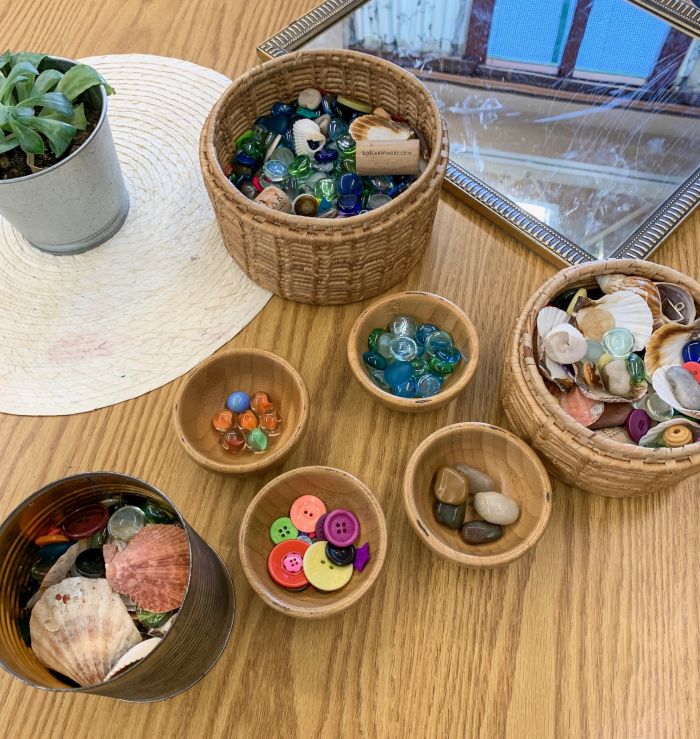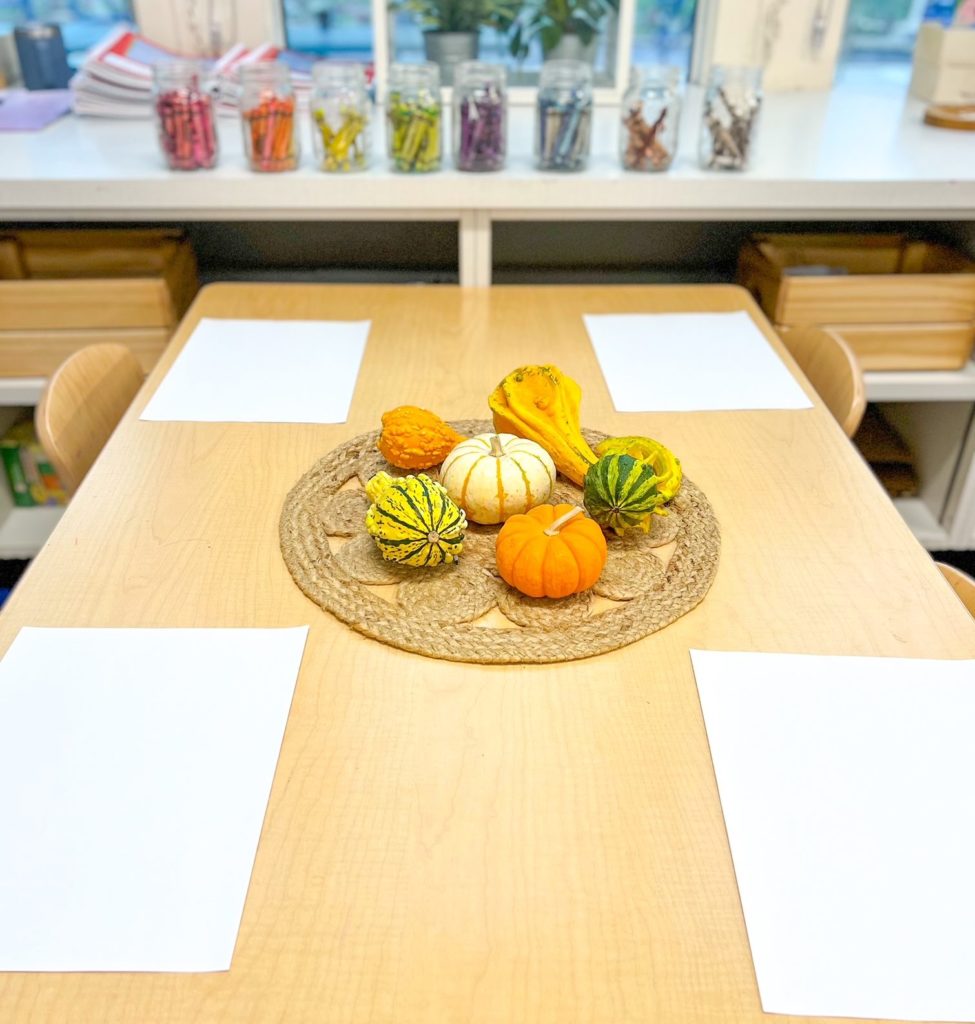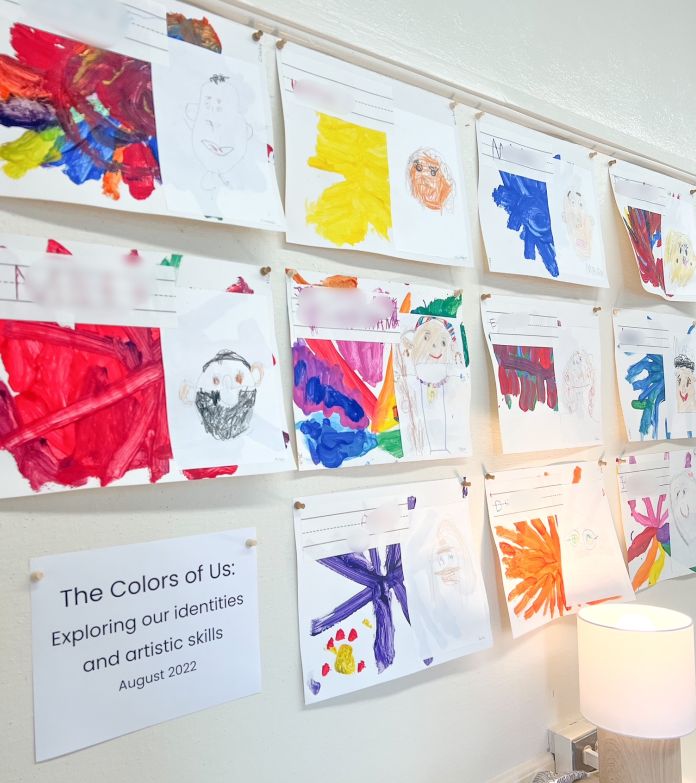The Reggio Emilia approach is known for its focus on creating an environment that encourages exploration, creativity, and active learning. Central to this approach is providing open-ended materials that foster children’s curiosity and enable them to construct their own knowledge. In this blog post, I’ll share strategies and ideas for setting up a Reggio-inspired classroom with easy access to materials, allowing children to engage in meaningful experiences and take ownership of their learning.

Embrace a Thoughtfully Organized Space
In a Reggio Emilia classroom, the space is often referred to as a “studio” rather than a traditional classroom. The studio is thoughtfully organized with different learning areas or “atelier” that invite children to explore various materials and engage in hands-on experiences. While you don’t need to redefine your space with such words, set it up with those ideas in mind. Arrange materials in an intentional manner, with open shelves or display tables that showcase the materials available for children to use.

Display Materials Beautifully
In the Reggio Emilia approach, aesthetics play a big role. Consider displaying materials in visually appealing ways, emphasizing their beauty and potential for exploration. Use transparent jars, baskets, or wooden trays to showcase natural materials, such as shells, stones, or leaves. Arrange art supplies in attractive containers or hanging organizers, allowing children to easily see and access a variety of colors, brushes, and other tools.

Incorporate Natural Elements
Reggio Emilia classrooms often incorporate natural elements to create a connection with the environment. Bring nature indoors by including plants, flowers, and natural materials like branches or stones. These elements can be used as materials for exploration or as inspirations for artistic creations. Ensure that natural materials are easily accessible to children, inviting them to engage with the beauty and textures of the natural world.

Offer Open-Ended Materials
Reggio Emilia places a strong emphasis on open-ended materials that allow for imaginative play and creative expression. Include a variety of loose parts such as blocks, fabric scraps, buttons, shells, and feathers. These materials can be used in multiple ways, fostering children’s problem-solving skills, collaboration, and divergent thinking. Organize loose parts in clearly labeled containers or baskets, making it easy for children to find and select the materials they need.

Create Provocations and Displays
Provocations are carefully arranged displays that spark children’s interest and curiosity. They often feature materials, objects, or questions that invite children to explore and investigate further. Set up provocation displays that align with current projects or topics of interest. Arrange materials purposefully, leaving room for children to add their own ideas and creations. Ensure that these displays are easily accessible, allowing children to interact with the materials and continue the learning process independently.

Rotate Materials and Refresh Displays
To maintain children’s engagement and curiosity, periodically rotate materials and refresh displays. Introduce new materials or rearrange existing ones to provide fresh opportunities for exploration and learning. Be intentional about observing children’s interests and curiosities, and use this information to guide the selection of materials and displays. Regularly updating the environment creates a sense of anticipation and excitement for children, enhancing their motivation and involvement.

Encourage Documentation and Reflection
In a Reggio-inspired classroom, documentation is an essential practice. Designate an area for displaying children’s work, photographs, or even documentation panels that showcase their learning processes. You could even include materials like markers, sticky notes, or clipboards, encouraging children to engage in their own documentation and reflection. By making these materials easily accessible, you empower children to take an active role in documenting and sharing their learning experiences.
Creating a Reggio-inspired classroom with easy access to materials is a powerful way to promote children’s exploration, creativity, and active engagement in their learning. By thoughtfully organizing the space, displaying materials beautifully, incorporating natural elements, offering open-ended materials, creating provocations and displays, rotating materials, and encouraging documentation and reflection, you can create an enriching environment that nurtures children’s natural curiosity and fosters their individual growth and development. Even if you teach in a traditional school, you can embrace the principles of the Reggio Emilia approach and create inspiring spaces that empower young learners to become active participants in their own learning journeys.



